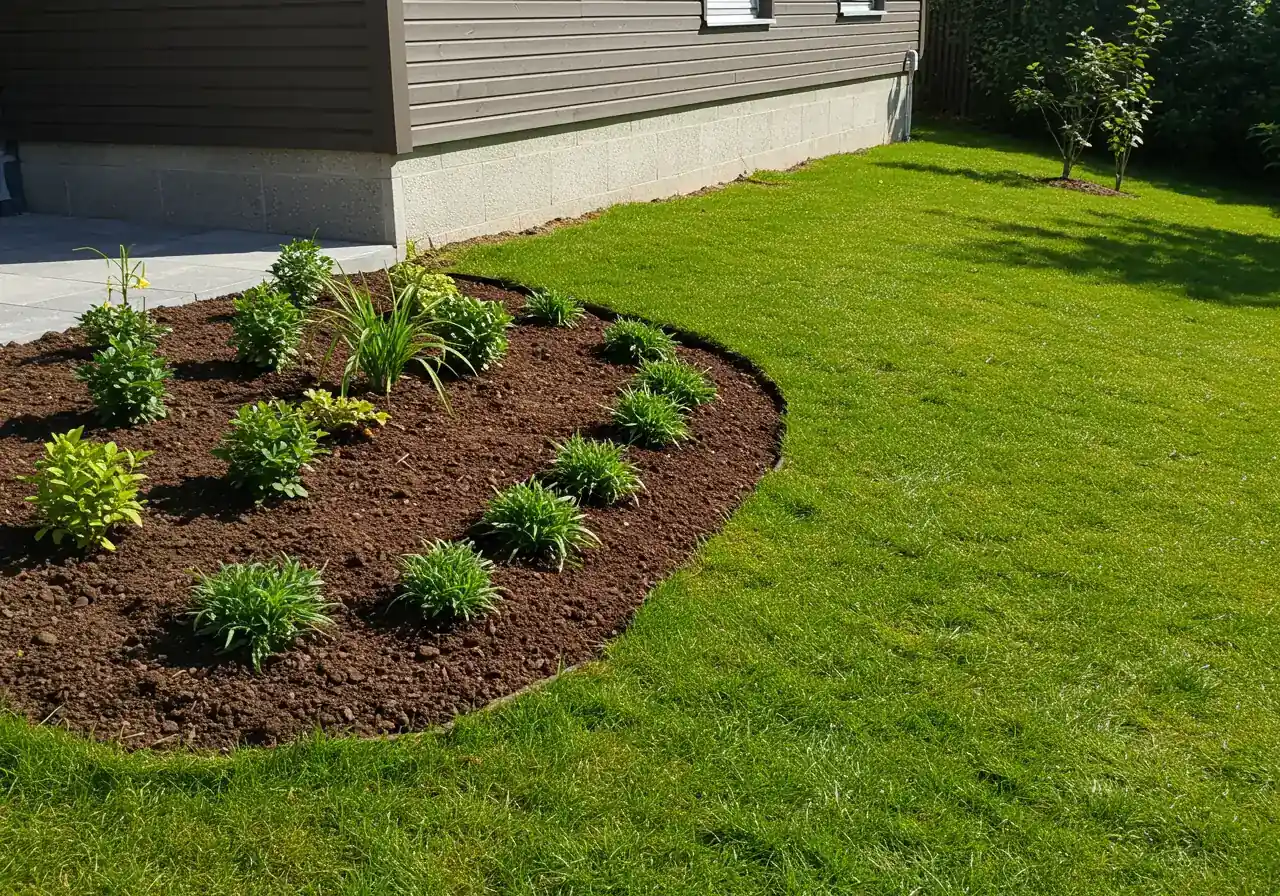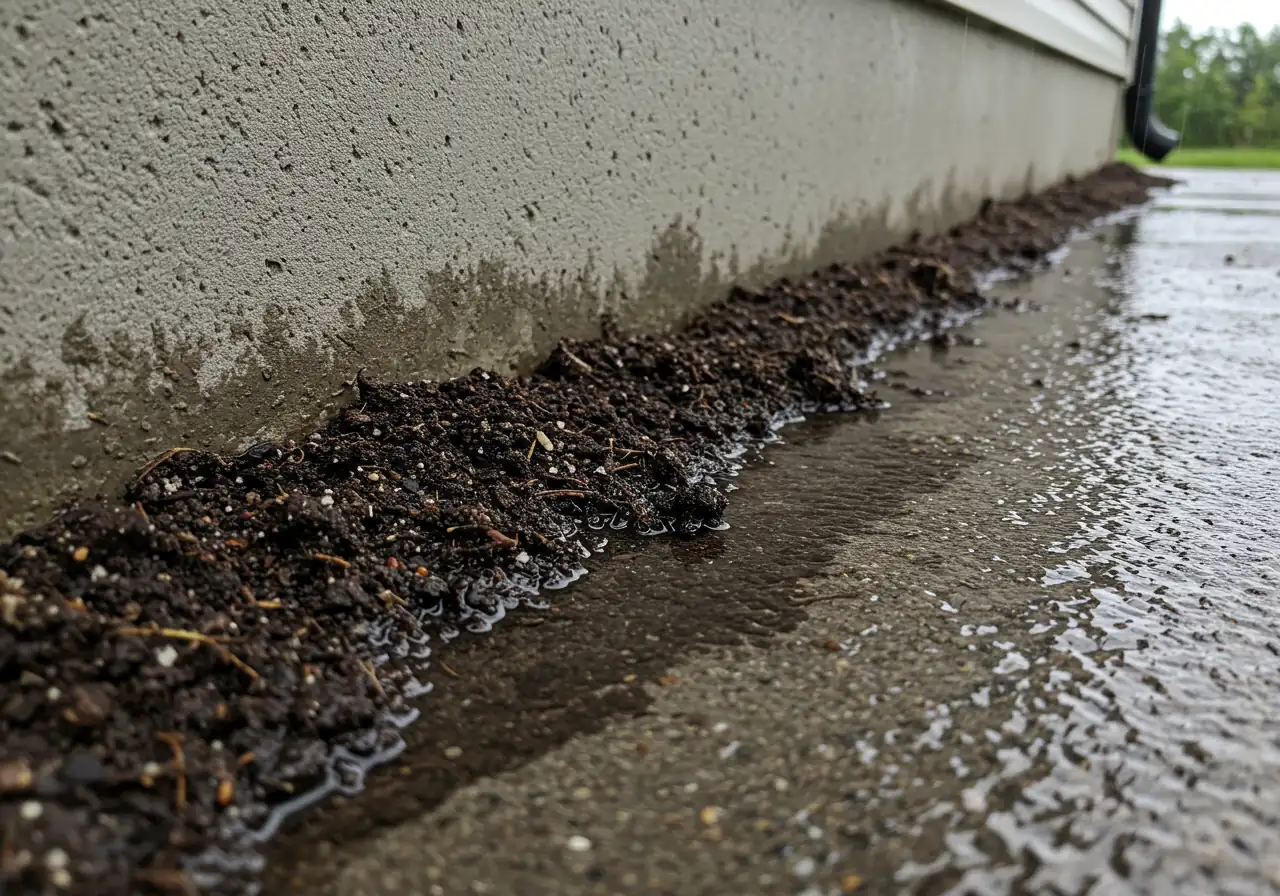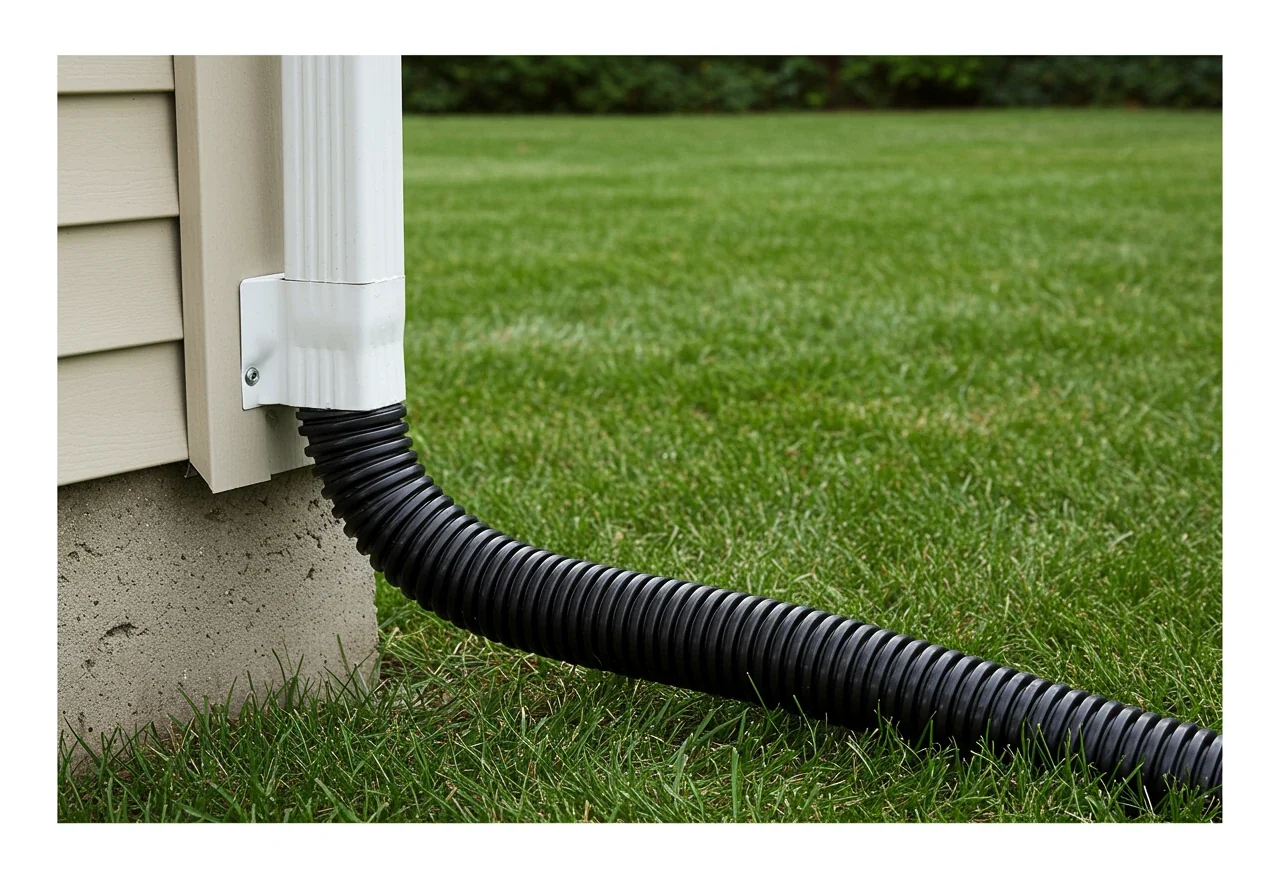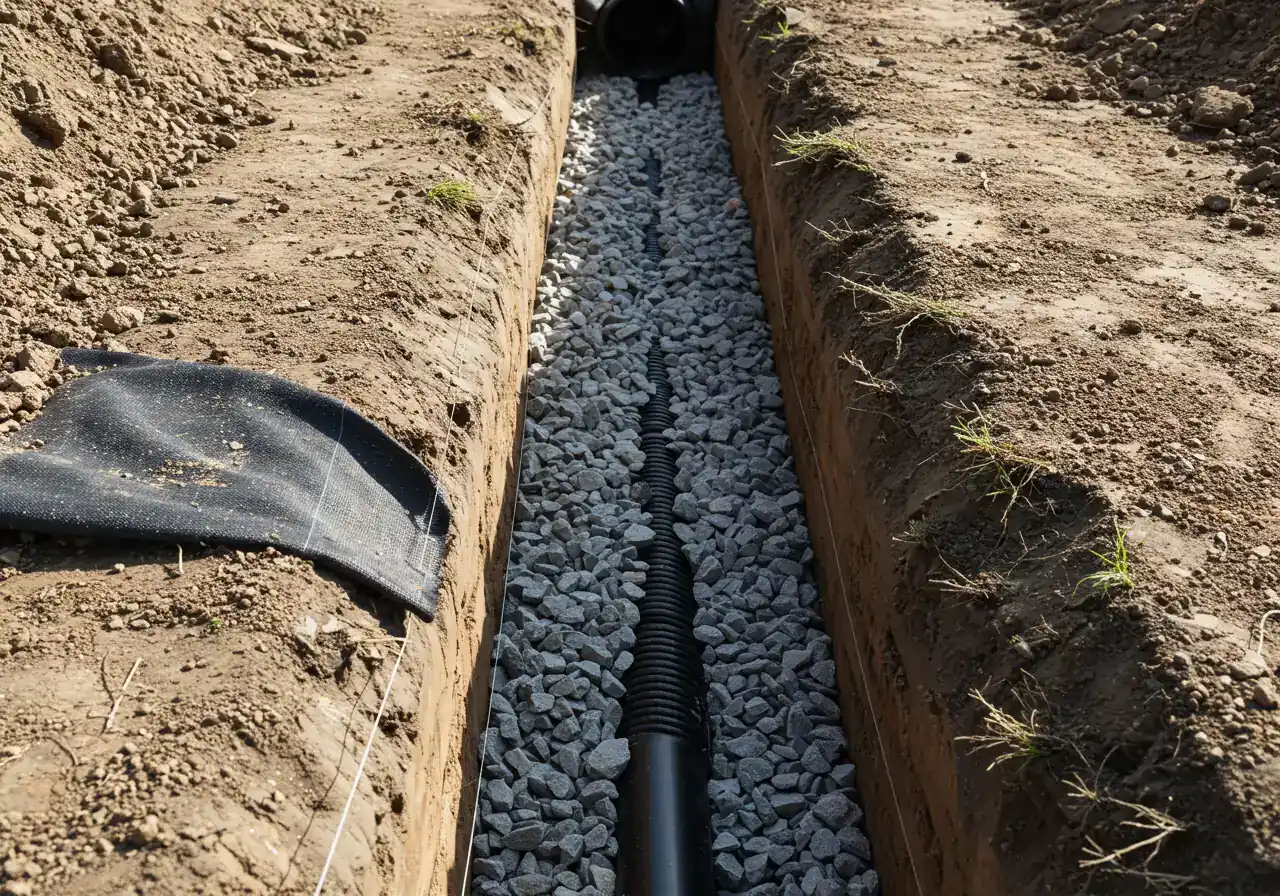Avoid Costly Repairs: Richmond Spring Grading Saves Homes
Stop water damage before it starts! Ensure your Richmond property has proper drainage.
Request Your Grading Quote Today!Quick Takeaways: Why Spring Grading Matters
- Prevents Water Damage: Proper grading directs water away from your foundation, preventing leaks and basement flooding.
- Protects Foundation: Reduces soil pressure and moisture against foundation walls, avoiding cracks and structural issues.
- Avoids Costly Repairs: Investing in grading now saves significant money on potential future foundation repairs, mold remediation, and landscape damage.
- Enhances Lawn & Garden Health: Prevents waterlogged soil, ensuring healthier grass and plants.
- Key in Ottawa Valley: Crucial due to heavy snowmelt, spring rains, freeze-thaw cycles, and clay soil common in areas like Richmond.
Introduction: Spring Showers Shouldn't Mean Indoor Puddles! Protecting Your Richmond Home
Ah, spring in the Ottawa area! We love seeing the last stubborn patches of snow finally disappear, revealing the promise of blooming gardens from Richmond clear over to Manotick. It’s a welcome sight! But let’s be honest, that melting snow and those famous spring showers bring a lot of water. And while we want that water for our lawns and flower beds, we definitely don't want it making a surprise appearance in our basements. Nobody enjoys discovering an unexpected indoor puddle where the rec room used to be!
This is where something called landscape grading becomes your home’s best friend. Simply put, grading is shaping the soil and land around your foundation so that rainwater and meltwater naturally flow away from your house, not towards it. Think of it like gently persuading water to take a detour around your biggest investment, keeping your foundation safe and dry. Getting the grading right is crucial for preventing leaks, foundation cracks, mold growth, and those wallet-draining home repair bills. Protecting your Richmond home starts right outside your door, ensuring spring’s arrival brings only joy, not soggy carpets!
Decoding Drainage: What Exactly is Spring Grading and Why is it Vital in the Ottawa Valley?

Alright, let's talk drainage! We know spring in the Ottawa Valley brings that glorious melt and, yes, often a boatload of rain. While our tulips might love it, our house foundations? Not so much. So, where should all that water go? Ideally, away from your home! This is where spring grading enters the scene.
Think of grading like gently sculpting the land around your house. The goal is to create subtle slopes so that water – whether from melting snowbanks or a classic Ottawa downpour – naturally flows away from your foundation walls and towards street drains or other suitable areas of your yard. Spring grading specifically focuses on checking and correcting these slopes after the winter chaos, ensuring your defenses are ready for the wettest season.
Why is this such a big deal here in places like Ottawa, Greely, or Osgoode? A few reasons make it extra important:
- Massive Snowmelt: We get serious snow! When it melts, often quite quickly, it releases a huge volume of water right next to your house.
- Heavy Spring Rains: April showers (and sometimes May downpours) add even more water to the equation.
- Freeze-Thaw Cycles: This is a big one! Throughout late winter and early spring, the ground freezes overnight and thaws during the day. This constant expanding and contracting can heave the soil, messing up previously good grading and creating low spots where water can pool right beside your foundation.
- Clay Soil: Much of the Ottawa Valley has heavy clay soil. Clay doesn't drain quickly; water tends to just sit on top of it. If the ground isn't sloped correctly, that water sits against your foundation much longer than it should.
Ignoring grading, or having poor grading, isn't just a minor oopsie; it can lead to some pretty soggy headaches:
- Wet Basements: The most obvious sign! Water pooling against the foundation finds tiny cracks and pathways inside.
- Foundation Damage: Constant moisture and freeze-thaw pressure can cause cracks, shifting, and long-term structural problems. Yikes!
- Mold and Mildew: Damp basements and crawlspaces are breeding grounds for mold, which looks gross and can impact indoor air quality.
- Soggy Lawns & Drowned Gardens: Poor grading can create waterlogged patches in your yard, killing grass and drowning your beloved perennials. This relates closely to overall garden health; avoiding common fall garden mistakes in Kenmore includes ensuring good drainage year-round.
- Damaged Hardscaping: Water pooling and freezing can heave patios, walkways, and driveways.
- Icy Hazards: Low spots near walkways can collect water that freezes into treacherous ice patches come the next cold snap.
- Pest Paradise: Standing water is basically an open invitation for mosquitos and other water-loving pests. Even features like ponds need care; proper grading ensures runoff doesn't wash debris into them, complementing good summer pond care practices learned in Embrun.
So, how do you tackle this? Take a walk around your foundation during a heavy rain or right after snowmelt. Do you see water pooling near the walls? Does the ground visibly slope towards your house? If you're unsure or see potential problems, getting professional advice is key. Consider booking a Kars spring landscape consultation to avoid costly mistakes – an expert eye can spot grading issues you might miss. Proper grading works hand-in-hand with other water management systems; ensuring downspouts are clear and that you handle Nepean irrigation winterization to avoid pipe damage are also part of the bigger picture.
Correcting grading might involve bringing in soil to build up areas near the foundation or creating features like swales to channel water away safely. It's often work best left to professionals who understand soil types and precise slope requirements. You can explore various landscape drainage solutions within our comprehensive landscaping and property maintenance services.
Getting your spring grading right isn't just about avoiding a wet basement; it's about protecting your home's structure, your landscaping investment, and your peace of mind through every Ottawa Valley thaw and downpour!
Uh Oh, Puddles! Spotting the Telltale Signs Your Richmond Property Needs Grading Attention

Okay, the rain clouds have finally parted over Richmond, and the sun is peeking through! Before you head inside, grab your trusty rubber boots and let’s take a quick stroll around your property. It’s the *perfect* time to play detective and look for signs that your landscape grading might need a little TLC. Ignoring these clues can lead to soggy surprises later on!
Think of your house like the king or queen of the castle, sitting proudly on a slight rise. Water should naturally bow down and flow *away* from the foundation walls. If it looks like water is cozying up to your house instead, you might have a grading issue. Whether you're in a classic older home in Osgoode or a newer build out in Metcalfe, settling soil and winter frost can change the landscape over time.
Here’s your "Uh Oh, Puddles!" checklist – keep an eye out for these telltale signs:
- Persistent Puddles Hugging the House: This is the most obvious clue! If you consistently see water pooling right against your foundation walls hours, or even a day, after rain stops, that's a red flag. Water should be moving away, not lingering.
- A Soggy Lawn Squish Factor: Does your lawn feel like a sponge near the house long after other areas have dried? While some dampness is normal, persistent sogginess indicates poor drainage, often linked to grading. Fixing this might be part of a broader plan, potentially involving a Greely yard cleanup service to address overall lawn health affected by waterlogging.
- Visible Backwards Slopes: Take a low view. Does the ground noticeably slope *towards* your house instead of away from it? Sometimes mulch or garden beds can hide this, but the soil level against the foundation should ideally be lower than the surrounding yard, dropping gently for several feet.
- Soil Erosion & Mini-Rivers: Are you seeing little channels carved into the soil after rain? Or maybe soil and mulch consistently washing away from garden beds near the foundation onto paths or the lawn? This shows water is flowing too quickly and potentially in the wrong direction. Keeping things tidy with proper mulching and edging is great, but it won't fix the underlying flow problem if mulch keeps migrating.
- Water Stains on the Foundation: Look closely at the visible part of your foundation walls (especially concrete or parging). Do you see whitish, chalky stains (efflorescence) or darker water lines? This indicates water has been sitting there frequently.
- That Damp Basement Smell: Sometimes the first sign isn't outside, but inside. A musty, damp odour in your basement or crawl space, even without visible water, often points to moisture seeping through the foundation due to poor exterior drainage. This can require more than just surface fixes; a thorough property clean up might be needed to clear debris and assess the foundation area properly.
- Waterlogged Window Wells: If your basement window wells frequently fill up like mini swimming pools, the grading around them is definitely directing water *in*, not *out*.
- Drowning Landscape Plants: Are shrubs or perennials near your foundation struggling, yellowing, or rotting despite adequate sunlight? Oversaturated soil from poor drainage could be the culprit. Addressing drainage is key for plant health, something often tackled during a detailed Metcalf garden clean up service.
Spotting one or more of these signs means it's probably time to investigate further. Catching grading issues early can save you from much bigger headaches (and expenses!) down the road. If you're seeing these warning signs, exploring professional landscaping and property maintenance services can provide solutions to redirect that water and keep your Richmond home safe and dry.
Getting it Right: The Professional Grading Process Explained
Okay, so you've spotted the puddles, maybe felt that squishy lawn near the house, and decided it's time to call in the pros for grading. Smart move! But what actually happens when the team arrives? It's not just about randomly pushing dirt around. Here’s a step-by-step look at the professional grading process, demystified:
Step 1: Consultation & Assessment
We meet you, discuss issues (wet basement, pooling water), walk the property, examine slopes, check downspouts, and take precise measurements. We listen to understand *your* specific situation. Learn about our team on the Clean Yards About Us page.
Step 2: Planning & Quoting
Based on assessment, we develop a plan (add/remove soil, swales), determine the required slope (aiming for 2-5% away from foundation), discuss solutions and materials (considering material selection), and provide a detailed quote.
Step 3: Site Preparation
Relocate plants, protect structures, mark utilities. Careful prep minimizes disruption, especially in established areas. Sometimes combined with broader work like a Metcalf property cleanup service.
Step 4: Grading & Compaction
Using appropriate equipment, we add/remove soil to achieve the planned slope. Soil is compacted in layers to prevent settling, ensuring the grade lasts. Often part of larger projects like an Ottawa yard cleanup service.
Step 5: Restoration
Finish by adding topsoil, then seeding, sodding, or mulching. Replant moved vegetation. Leave the yard tidy and attractive, blending the solution seamlessly, much like the final steps of a Metcalf garden clean up service.
Professional grading is a careful, measured process focused on protecting your home by ensuring water flows away, not towards it. It's an investment that brings peace of mind, especially during those wet Ottawa springs!
Beyond the Slope: Smart Drainage Companions for Ottawa Homes
So, we've established that proper landscape grading is the heavyweight champion when it comes to protecting your Ottawa home from water woes. But sometimes, even the champ needs backup. These additional solutions work *with* grading for ultimate protection.
Downspout Duty & Window Well Wisdom

Downspout Extensions: Crucial! Ensure downspouts carry water 6-10 feet away from the foundation. Dumping water right at the base undermines grading. Keep gutters clear – a task often included in a Metcalf property cleanup service.
Window Wells: Use clear covers to keep out debris. Ensure the well itself drains properly (usually via gravel to weeping tile). If they fill up, the drain might be clogged or need improvement.
French Drains & Swales

French Drain: A gravel-filled trench with a perforated pipe inside, lined with landscape fabric. It intercepts groundwater or surface water and channels it away underground. Effective for soggy areas or protecting foundations.
Swales: Wide, shallow, vegetated channels that look like natural dips. They slow down surface runoff, guide it away gently, and allow some water to soak into the ground. They blend well aesthetically.
Rain Gardens & Permeable Pavers
Rain Gardens: Shallow depressions planted with water-tolerant plants. They capture runoff, filter it slowly into the soil, reduce storm drain load (complementing city yard cleanup service goals), provide habitat, and look beautiful. A green solution popular in eco-conscious areas.
Permeable Pavers: Pavers with gaps allow rainwater to soak through into a prepared base layer below, reducing surface runoff significantly. A smart choice for patios and walkways, integrating well with good lawn care practices for overall property health.
The best strategy might involve several companions working with grading. Investing now means you'll appreciate it during the next big storm! Feeling overwhelmed? That's okay! We can help. Don't hesitate to contact us for a consultation. Making the right choice now means you'll mentally send a '[Thank You](https://cleanyards.ca/thank-you/)' to your past self later.
Grading Investment vs. Potential Repair Costs
Illustrative comparison of preventative grading costs versus potential foundation repair expenses.
Key Insights: Protect Your Foundation Like a Pro!
Protecting your home's base is crucial. Here's how to be proactive:
- Be a Puddle Detective: After rain/melt, check if water pools near the foundation or flows away. Ensure downspouts discharge far from the house.
- Maintain the Magic Gap: Keep 4-6 inches of visible foundation between soil/mulch and siding/brick to prevent moisture wicking and pests.
- Avoid Mulch Mounds: Don't let mulch build up against the foundation; it can reverse the slope. Remove old material if needed. This can be checked during a city garden clean up service.
- Downspout Diligence: Use extensions (6-10 ft) and keep gutters clear. Regular clearing, often part of an Ottawa garden clean up service, is vital.
- Plant Smart: Avoid large shrubs/trees too close to the foundation. Keep existing plants trimmed for airflow. Regular city garden maintenance service helps manage this.
- Know When to Call Pros: If issues persist, you see cracks, or feel unsure, get a professional assessment. Reviewing project details and terms and conditions ensures clarity. Don't hesitate to contact us.
Following these tips regularly significantly contributes to a safe, dry home.
Find reliable local services through resources like Clean Yards on Google or check reviews.
FAQs: Your Richmond & Ottawa Grading Questions Answered
Got questions about getting the lay of the land *just right* around your Ottawa home? You're not alone! Here are some common questions:
Ah, the million-dollar question (hopefully not literally!). The truth is, grading costs can vary quite a bit. Think of it like ordering pizza – the price depends on the size and toppings! Factors that influence the cost include:
- The size of the area needing grading.
- How much the slope needs to change (requiring more or less soil).
- Whether we need to bring in specialized soil or remove excess dirt.
- How easy it is to access the area with equipment.
- The complexity of the drainage situation.
Good question! Generally, for minor grading adjustments on your own property – like building up the soil a few inches near your foundation – you probably won't need a permit in most Ottawa-area municipalities. However, if the project involves significant changes to the landscape's elevation, alters major drainage paths, involves building retaining walls over a certain height, or happens very close to property lines or protected environmental areas (like creeks or wetlands regulated by the Rideau Valley Conservation Authority), then a permit might be required. Rules can differ slightly between areas like Richmond, Winchester, or Kenmore. It's always wisest to double-check with your local municipal planning or building department before starting major work, or check resources like the City of Ottawa's permit guide. While professional landscapers are often familiar with requirements, confirming permit needs is ultimately the homeowner's responsibility. Also, review our privacy policy regarding information handling.
Timing is key for smooth sailing! The ideal times for grading in the Ottawa region are typically spring (once the ground has thawed completely and isn't too soggy) and fall (before the ground freezes solid). Trying to work with frozen or waterlogged soil is like trying to wrestle a grumpy beaver – difficult and messy! Summer can work too, but very hot, dry weather can make establishing new grass afterwards a bit trickier. As for duration, a simple grading fix might only take part of a day. More involved projects needing significant soil moving or complex shaping could take several days. We always aim to work efficiently to minimize disruption. Sometimes, preparing the site involves clearing brush or debris, which could potentially be bundled with a broader service like an Ottawa property cleanup service or a city property cleanup service to get everything tackled efficiently.
Honesty is our policy! Grading is highly effective at solving problems caused by surface water pooling around your foundation or in low spots in your yard. If water is flowing towards your house because the ground slopes the wrong way, correcting that grade is often the single most important fix. However, grading primarily addresses surface water. If your basement issues are due to high groundwater tables or cracks deep in the foundation walls below ground level, grading alone might not be the whole solution (though it almost always helps!). It works best as part of a team effort – ensuring downspouts are extended, window wells are clear, etc. Properly directing water away also prevents constantly waterlogged soil that can drown plants, a common issue tackled during a detailed Marionville garden clean up service where drainage improvements are often discussed. So, yes, it's usually a game-changer for surface water woes! See some examples of our work on the transformations page.
Ah yes, the infamous Ottawa clay! You're right, heavy clay soil, common in areas like Barrhaven and Nepean, presents unique challenges. It doesn't drain well on its own (water tends to sit on top) and it can be heavy and sticky to work with, especially when wet. But don't despair! Experienced professionals know how to handle clay. We might need to use different techniques, ensure extra careful compaction (clay settles differently than sandy soil), or sometimes recommend amending the top layer with better draining soil or organic matter, depending on the situation. Moving heavy clay might involve more labour during site preparation, similar to tasks undertaken during a comprehensive Marionville property cleanup service where significant debris or soil might need relocating. So, while clay adds a wrinkle, effective grading is absolutely achievable and just as important (maybe even more important) in clay-heavy areas.
Great question – the job isn't quite done when the slope is perfect! Once the soil is properly graded and compacted, the bare earth needs protection to prevent erosion and get things looking green again. Usually, this involves spreading a layer of good quality topsoil. Then, depending on your preference and budget, we typically either seed the area with grass or, for a quicker, more instant result, recommend professional sod installation services. If the graded area is part of a garden bed, we'll apply mulch. Your main job afterwards is typically watering the new grass seed or sod according to instructions, especially during dry spells, and trying to keep heavy foot traffic off the area until the lawn gets established. We’ll give you specific guidance based on what’s done! Proper follow-up care is part of good garden maintenance.
Conclusion: Grade Smarter, Not Harder – Protect Your Biggest Investment
Phew! We've covered a lot of ground, literally! From decoding drainage dilemmas to spotting those sneaky puddles hugging your Richmond foundation, we hope you're feeling more confident about the power of proper landscape grading. Let's face it, dealing with water damage is about as fun as discovering squirrels have declared war on your prize-winning tomatoes. Grading is your secret weapon to gently persuade rainwater and snowmelt to take a hike away from your house, not invite themselves into the basement.
Think of it this way: getting the slope right around your home, whether you're in Richmond or enjoying the river views in Manotick, is one of the smartest, most cost-effective ways to protect your biggest investment. It helps prevent those eye-watering repair bills that come with foundation cracks, soggy drywall, and moldy surprises. Plus, good drainage means happier lawns and gardens – no more drowning petunias! Proper soil preparation is key for both grading and ensuring your plants thrive afterward.
Taking action doesn't have to be daunting. Start by simply observing how water flows during the next rain shower. Maybe combine grading considerations with your regular spring tidying – think about tackling it as part of a comprehensive Ottawa property cleanup service or a Metcalf yard cleanup service to get everything shipshape. If you're seeing warning signs or dreaming of a landscape overhaul that includes better drainage, like a beautiful new flower bed installed with drainage in mind via expert garden install services, don't hesitate to call in the cavalry (that's us!). Addressing drainage proactively is a cornerstone of smart property care, much like ensuring overall tidiness, which might remind folks of the comprehensive care offered by a dedicated Marionville yard cleanup service or city garden clean up service for those outside the immediate city core. Check out local Ottawa gardening guides for plant selection advice suitable for well-drained soil.
So, grade smarter, not harder! Protect your foundation, keep your basement dry, and give yourself the peace of mind that comes with knowing your home is safe and sound. Ready to discuss your property's specific needs? Get in touch – we’re here to help you keep your feet (and your foundation) dry!
Ready to Protect Your Home? Let's Talk Grading!
Stop crossing your fingers every time it rains! Take control of your property's drainage challenges today. Let's work together to keep your Richmond home safe, dry, and looking great.
Request Your Free Grading Assessment
